Drugs
- main
- Drugs

GROWING TRENDS OF DRUG ABUSE IN SCHOOL CHILDREN & YOUTHS
GROWING TRENDS OF DRUG ABUSE IN SCHOOL CHILDREN & YOUTHS
While the State police are addressing both demand and supply reduction, drug addiction among children and youth continues to rise. Existing awareness initiatives are insufficient in preventing drug abuse. Implementing drug education and awareness programs at the school level is crucial to reducing addiction risks. Early sensitization of youth can cut the risk of addiction by up to fifty percent.
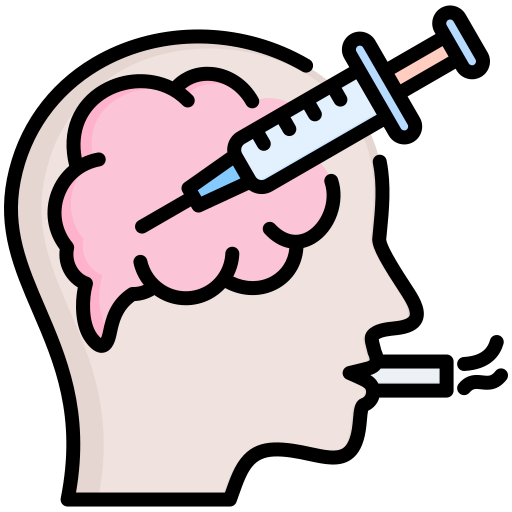
Drug Addiction
A type of behavioural disorder in which persistent drug seeking behavior continues despite negative consequences, leading to psychological cravings, social disturbances, and mental health issues.
Why do people take drugs?
• To feel good-Drugs can produce intense feelings of pleasure.
• To feel better-People who suffer from social anxiety, stress, and depression use drugs to try to feel less anxious.
• To do better-People feel pressure to improve their focus in school or at work or their abilities in sports.
• Curiosity and social pressure-Teens are particularly at risk because peer pressure can be very strong.
But at what cost? That is realized later
Himachal Pradesh
On a Deadly Dangerous Path to becoming a Drug Hub
During the past years, it has been observed that our historically revered state, best known as “Land of GOD’s” is being severely impacted by the adverse effects of various kinds of drug abuse, causing significant harm to the state’s youth and school- going children. The current scenario is concerning with an increasing number of youths and school children engaging in drug abuse addiction and trafficking. A spike in drug overdose-related deaths underscores the growing crisis.
The Dangerous Drugs Spatial Distribution in Land of GODS
Cannabis cultivation is prominent in Kullu, Mandi, Shimla, Chamba, and Sirmaur, while ‘Chitta’ enters the State via Punjab through Una and other districts, with direct supply channels from Delhi and Chandigarh to Shimla and Solan districts. This illicit drug production attracts tourists seeking narcotic substances; a notable example is the cannabis strain “Malana Cream,” a recognized brand in both domestic and international drug trafficking circles. Reports also indicate drug use at Rave Parties in areas within Kullu and Kangra districts.

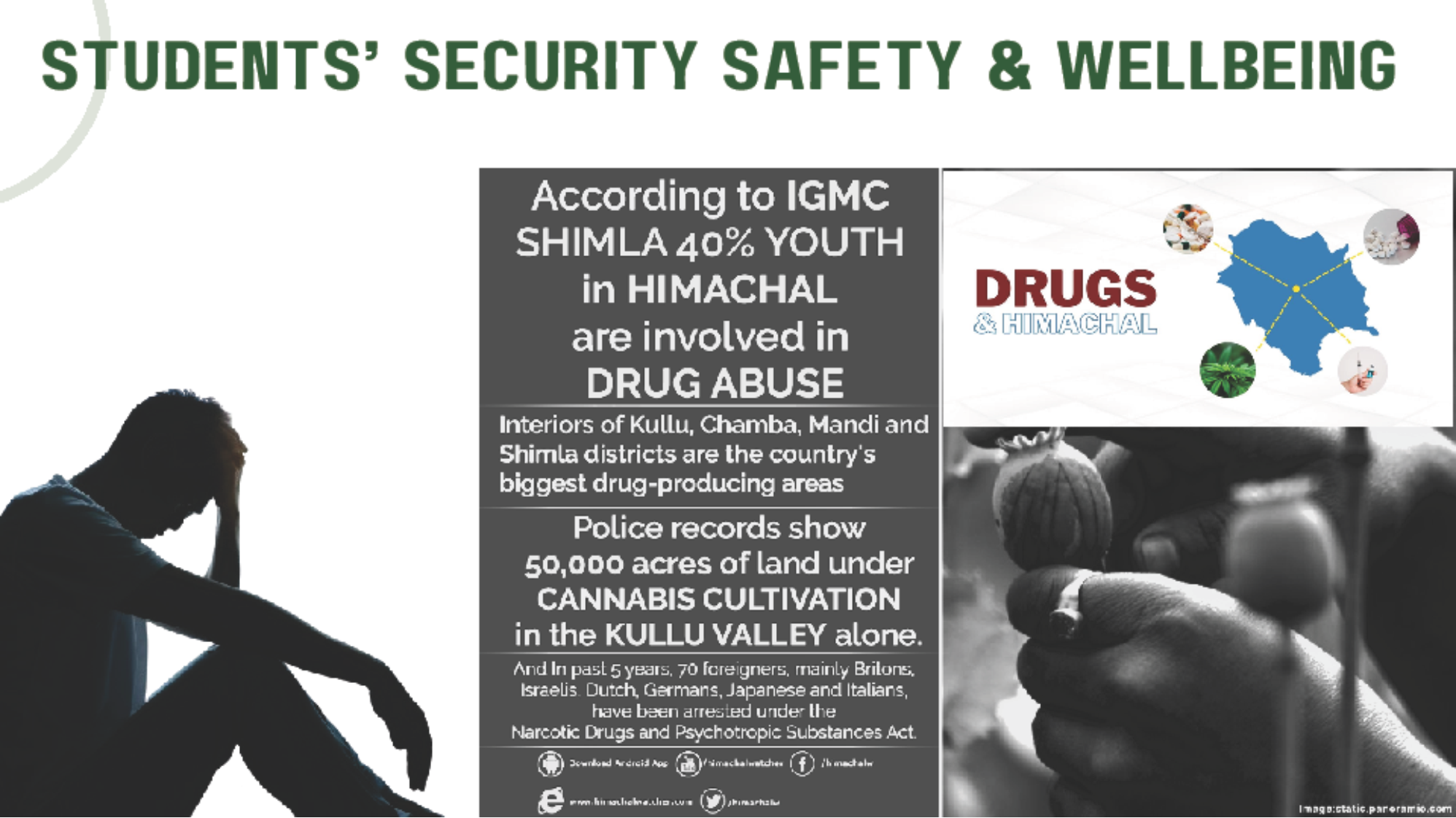

“In the USA, an ongoing study called “Monitoring the Future” (MTF) examines behavioral trends and attitudes toward drug use, surveying 50,000 students annually across 8th, 10th, and 12th grades (12th graders since 1975, and 8th and 10th graders since 1991). The MTF Panel study follows each graduating class, with surveys conducted bi- annually from ages 19-30 and every five years after age 35. This study provides critical insights into drug use, alcohol consumption, tobacco use, steroid usage, and psychotherapeutic drugs, allowing policymakers and NGOs to formulate effective interventions.“
Studies by university scholars, governmental departments, and independent groups reveal that marijuana usage rises notably among secondary school students, influenced by local cultivation and accessibility
Key Factors contributing to Drug Menace
• Lack of awareness about the consequences of drug use
• Insufficient stringent actions against traffickers
• Parental oversight gaps
• Lack of effective institutional monitoring policies within schools and colleges
PARENTS’ CORNER
Involvement and support of parents and all the responsible members of our society is critical in preventing youth drug menace. We need to talk openly. Conversations with children are one of the most effective tools to connect with them.


Signs to Watch
• Declining school performance
• Abrupt changes in friends
• Abnormal health issues or sleeping habits
• Deteriorating relationships with family
• Less openness and honesty
Security, Safety & Well Being
The painful realities in front of us make it imperative to safeguard the future of the State’s youth and school-going children by
• Educating
• Monitoring
• Tracking
• Protecting them from drug abuse.
Why Do Youth Use Drugs? Risk Factors
• Lack of parental supervision
• Poor attachment with caregivers
• Undiagnosed mental health problems
• Substance-using parents, siblings or friends
• Peer rejection
• Child abuse/neglect – Unhealthy peer groups
What we Need
In this fight against drug addiction, technology plays a crucial role.
Drug usage monitoring can be facilitated by customized sensors and Al-driven tools. These sensors are embedded in identity cards and controlled via scientific networks.
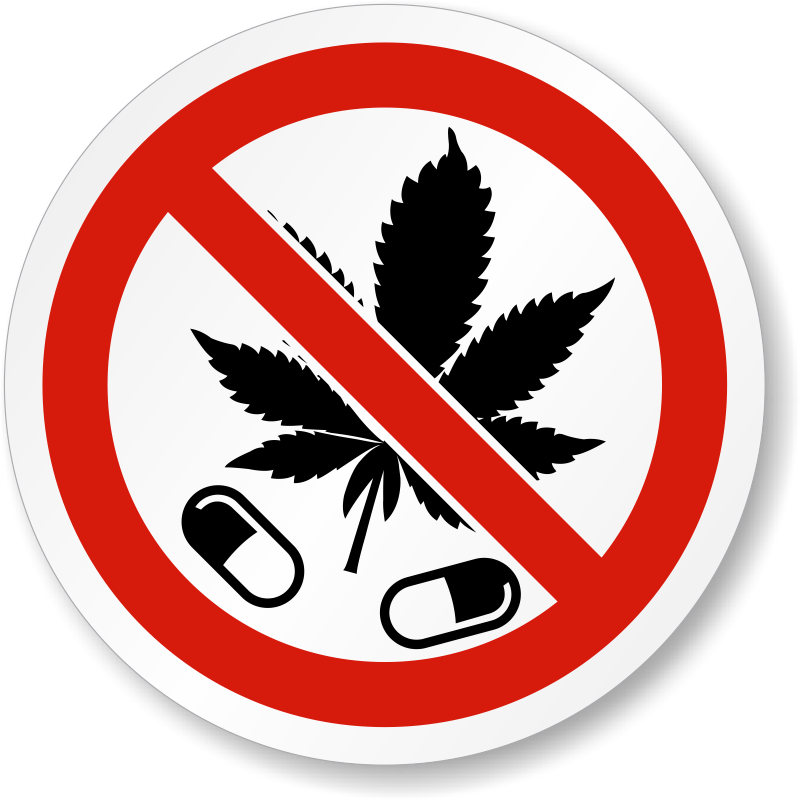
Our Solution
Coverage, Reliability, Scalability & Security
AloT (Artificial Intelligence of Things) Solutions
Artificial Intelligence of things (AloT) is the combination of Artificial Intelligence (AI) technologies and the Internet of Things (loT) infrastructure. Its goal is to create human machine interactions and enhance data management and analytics. We propose to empower governments, institutions, and societies through Internet of Things (IoT) solutions, utilizing customized sensors, Al tools, and wireless technology for personal tracking of school children and youths, aimed at ensuring safety and security. This project would utilize license-free sensors and LPWAN (Low Power Wide Area Network) for long range, low power wireless connectivity, transforming even the most passive componenets of city operations.
Multi-Dimensional Approach Solutions Against Drug Menace
We follow a detailed Simplistic Technological approach starting from surveys, interactions, data analysis and for finding out the final solution of the problem. This will enable personal tracking of school children and youths, aimed at ensuring safety, security and well being
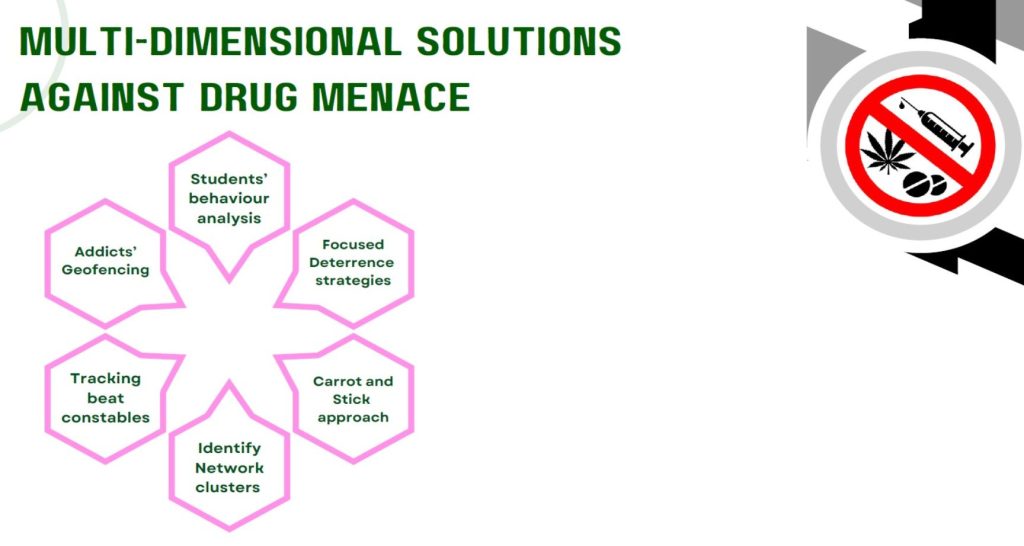
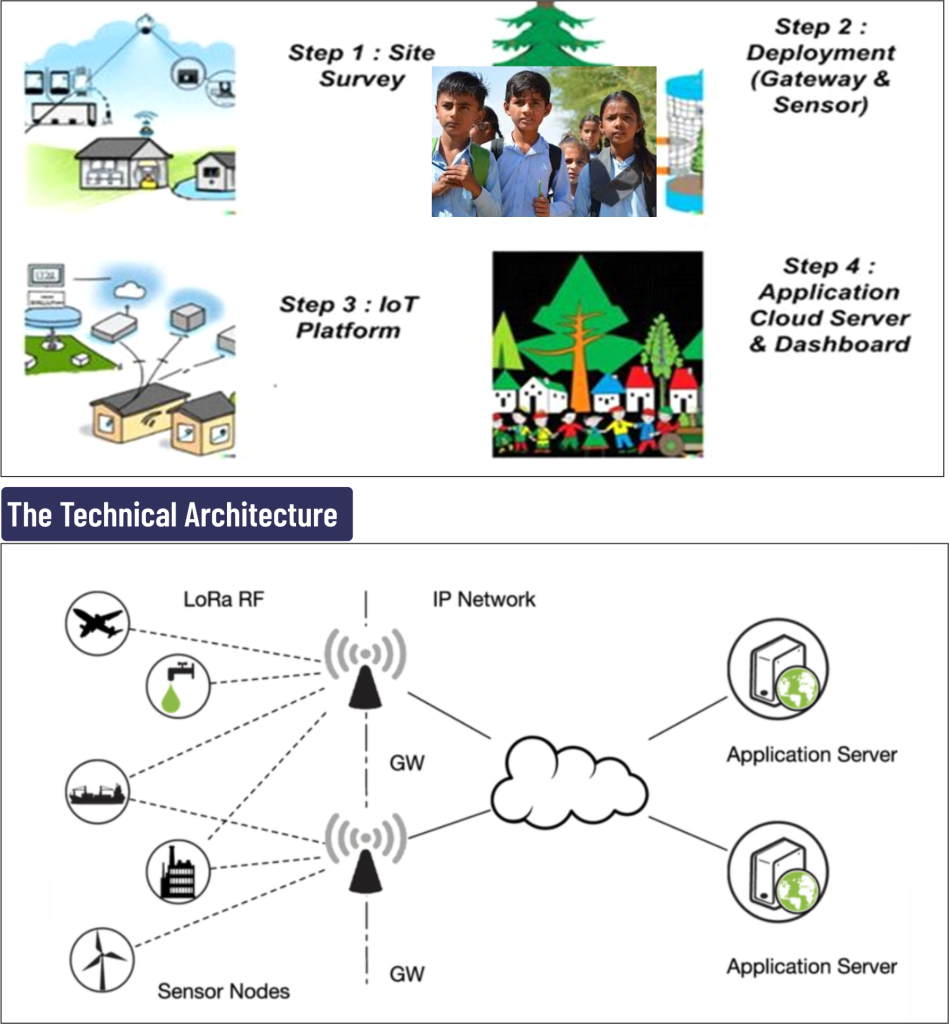
It includes end devices, gateways, and network servers with gateways acting as intermediaries between end devices and the network server, which manages data traffic and ensures secure communication.
How it works
Expanding Beyond Boundaries – The Global Coverage
To start with a Proposed Pilot Project for Shimla Town in the following eight schools
1. Govt. Sr. Secondary School, Lalpani
2. Govt. Sr. Seconadry School, Shogi
3. Laureate Public School, Bharari
4. St. Edward's School, Bamloi
5. Loreto Convent, Tara Hall
6. Saraswati Vidya Mandir, Kasumpati
7. DAV Sr. Secondary School, New Shimla
8. Kendriya Vidyalaya Shimla, Jakhoo
Stage 1: Minimum Viable Solution (MVS):
Establishment of Minimum Viable Solution (MVS) in Shimla town with focus on supporting school with approximately 10 students in the MVS for validating hardware capabilities.
This stage is crucial for testing the feasibility and functionality of our sensor network in the geographic setting of Shimla.
Stage 2 – The Pilot phase
The Pilot phase will expand to more schools in Shimla & surrounding areas.
Here, we will increase the number of gateways to 40+ to enhance coverage & connectivity
Execution Starategy & Deployment
The successful execution of a LoRaWAn solution in Shimla will serve as a model for future expansions in the state, the country and then the whole world. This strategy focuses on local management, robust infrastructure, and scalability ensuring a sustainable and impactful AloT ecosystem with a step-by step approach.
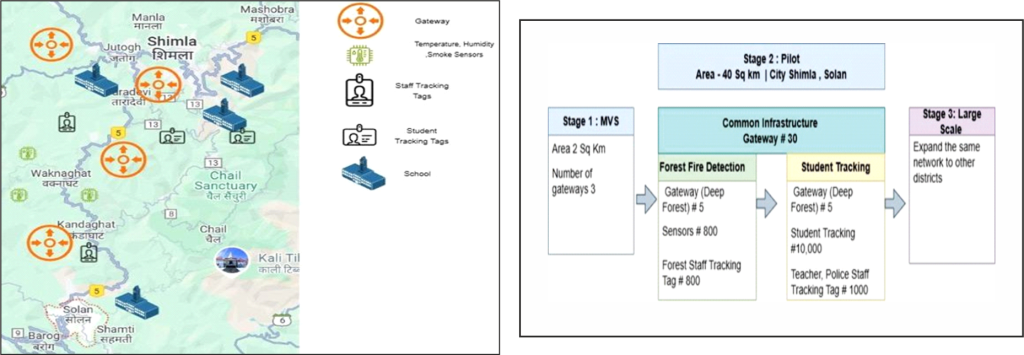
Safeguarding the future of the State’s youth and school-going children is paramount. This requires a holistic approach of education, monitoring, tracking, and protection to combat drug abuse effectively. Technology plays a pivotal role in this fight, with customized sensors and AI-driven tools enabling proactive intervention.
Embedded in identity cards and powered by scientific networks, these solutions provide:
Parents: Real-time monitoring of their children’s location and activities.
Schools and Colleges: Tools to oversee student performance and ensure safety.
Law Enforcement: Capabilities to track known drug traffickers and monitor high-risk areas for drug trade.
This initiative aims to ensure the security, safety, and well-being of the State’s youth, creating a safer and healthier future.

What we do
Lorem ipsum dolor sit amet, consectetur adipiscing elit, sed do eiusmod tempor incididunt ut labore et dolore magna aliqua.
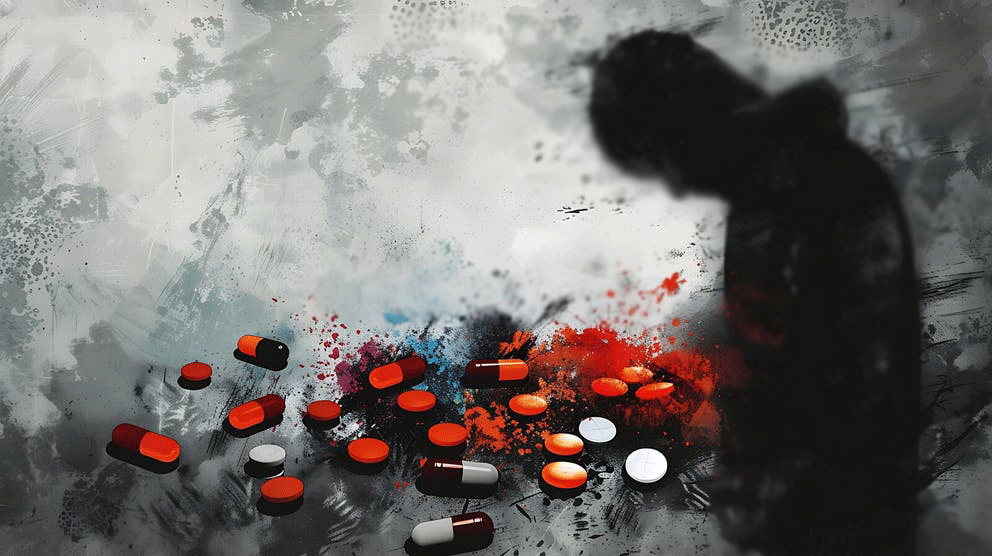
Ground level impact
Lorem ipsum dolor sit amet, consectetur adipiscing elit,

Modern Technological Solutions
Lorem ipsum dolor sit amet, consectetur adipiscing elit,
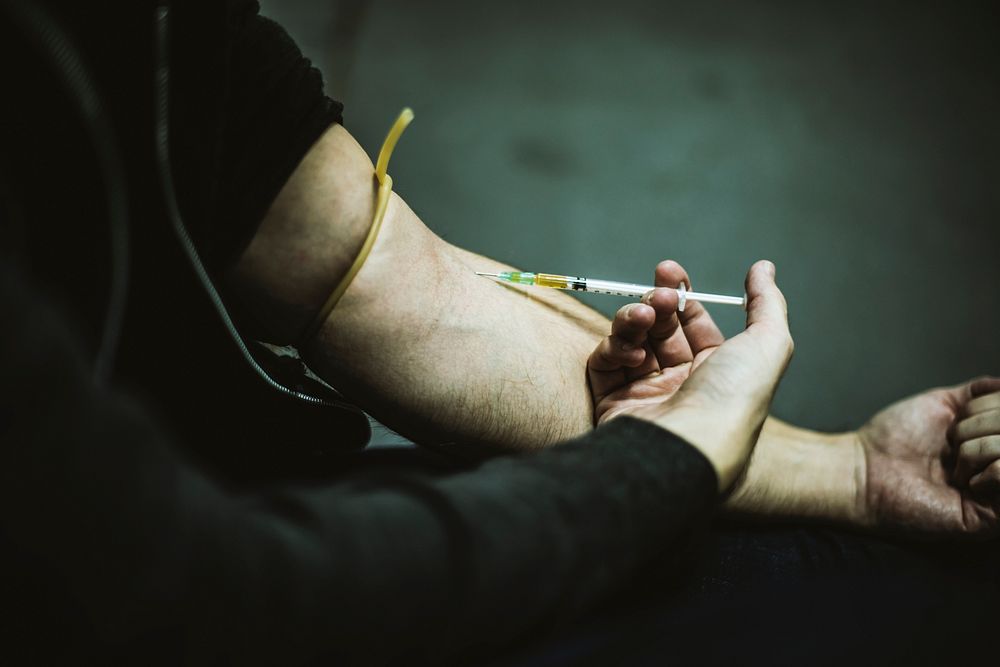
Real life issues
Lorem ipsum dolor sit amet, consectetur adipiscing elit,

Students’ safety & Wellbeing
Enhanced Safety: Via Real-time Tracking.
Attendance Automation: Simplified Tracking and Reporting
Emergency Preparedness: Quick Location Sharing
Efficient Management: Facilitates Bettter Resource allocation.
Student Behavioural analysis: Predication for Prevention
AIoT Solutions for Protecting Invaluable Assets
We propose using AIoT solutions to enhance safety and security by tracking school children and youth, and monitoring immovable assets like forests. This would involve customized sensors, AI tools, and wireless technology to detect early signs of fires, illegal deforestation, and mining activities. A pilot project in Shimla Town and the Pine-intensive forest area in Solan District, Himachal Pradesh, would utilize license-free sensors and LPWAN for efficient, long-range connectivity, transforming city operations and asset protection.

Students’ safety & Wellbeing






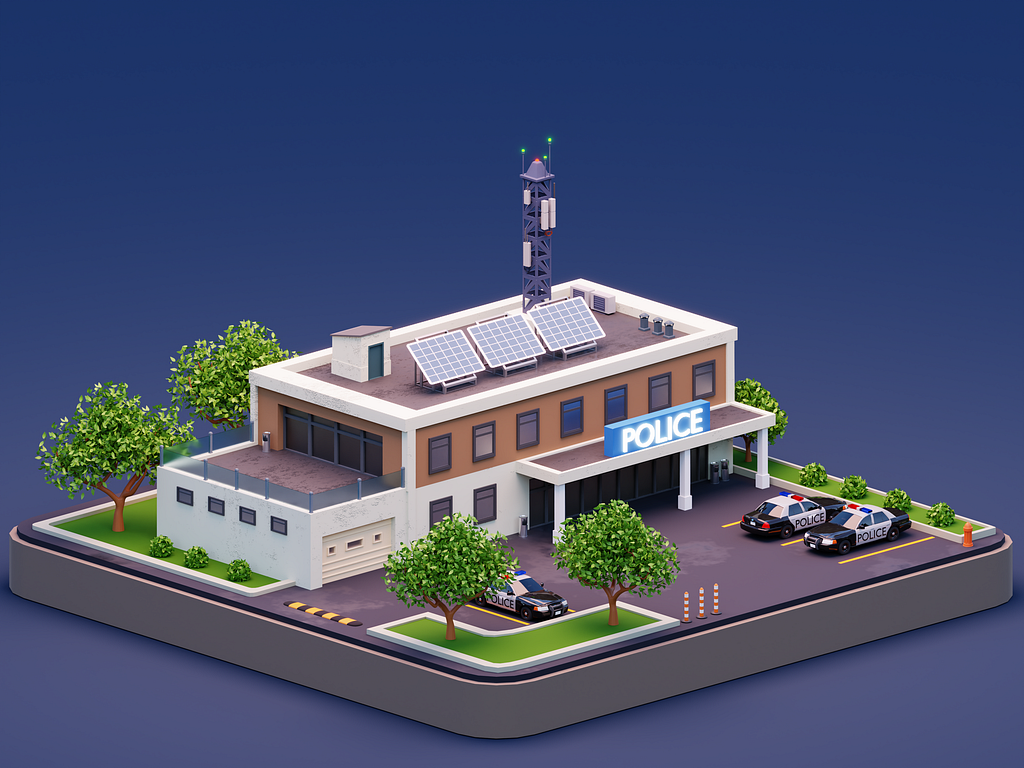
Enhanced Safety: Via Real-time Tracking.
Attendance Automation: Simplified Tracking and Reporting
Emergency Preparedness: Quick Location Sharing
Efficient Management: Facilitates Bettter Resource allocation.
Student Behavioural analysis: Predication for Prevention

Students’ safety & Wellbeing







Enhanced Safety: Via Real-time Tracking.
Attendance Automation: Simplified Tracking and Reporting
Emergency Preparedness: Quick Location Sharing
Efficient Management: Facilitates Bettter Resource allocation.
Student Behavioural analysis: Predication for Prevention

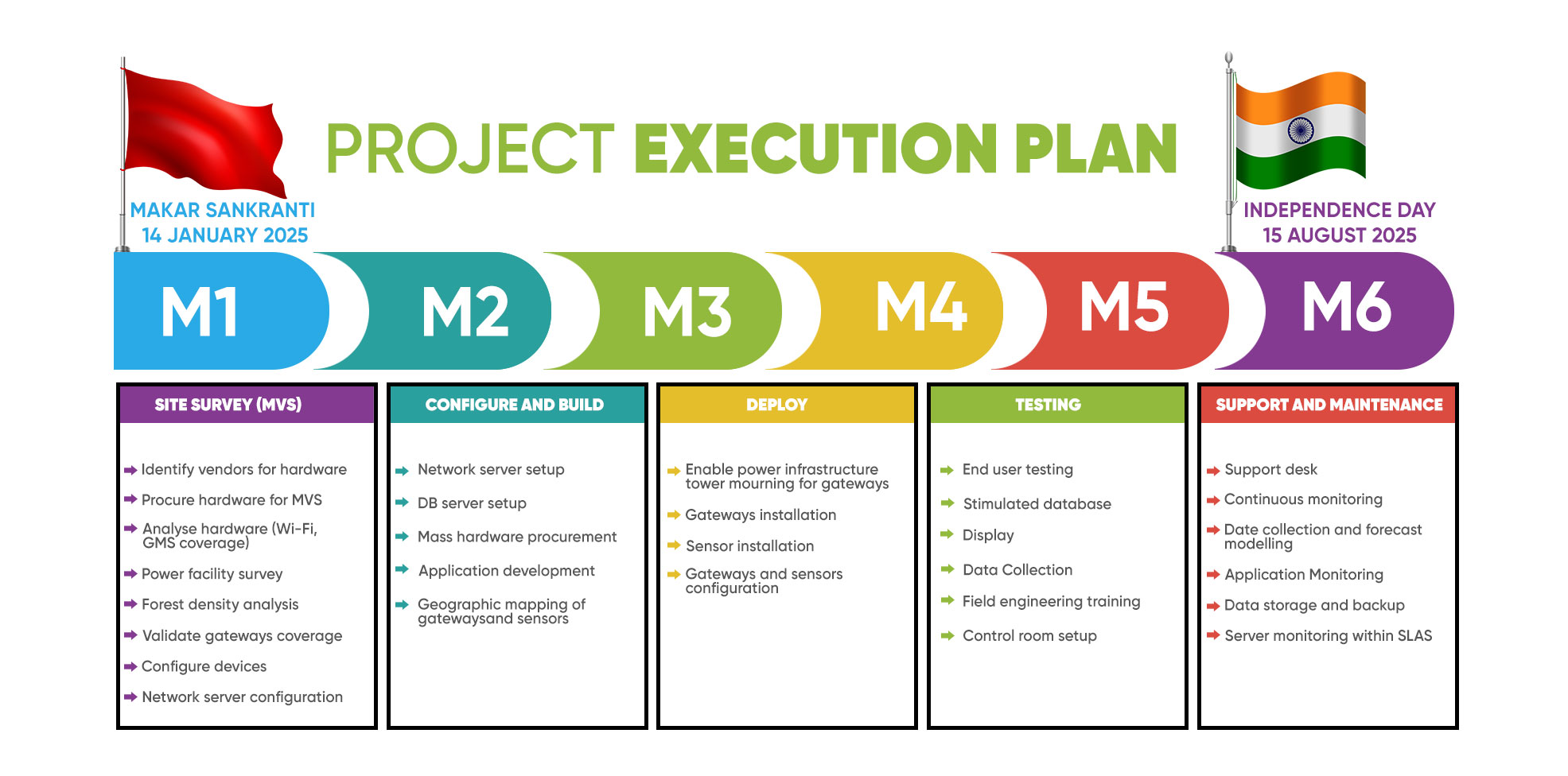
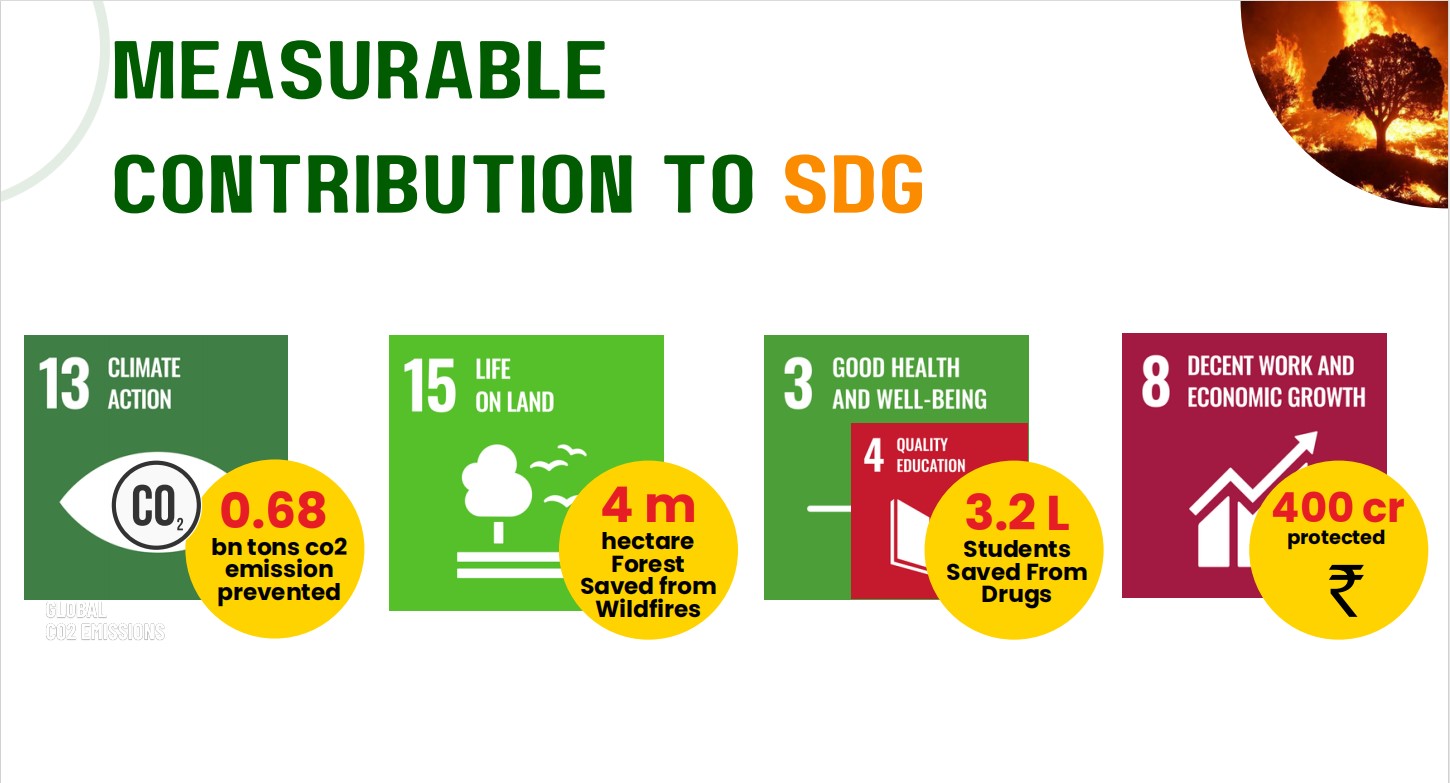
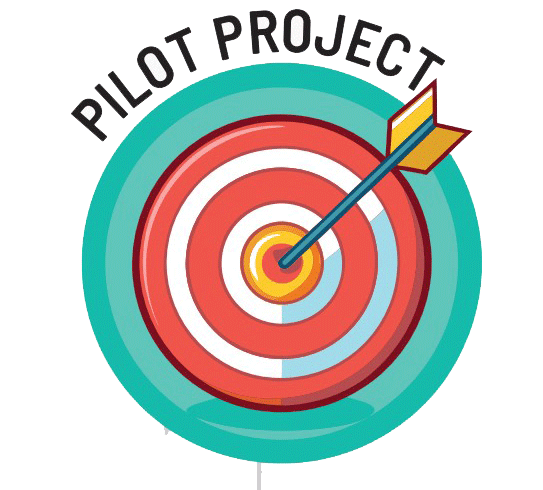
Rs. 12 Crore
Time Deadline – 6 Months
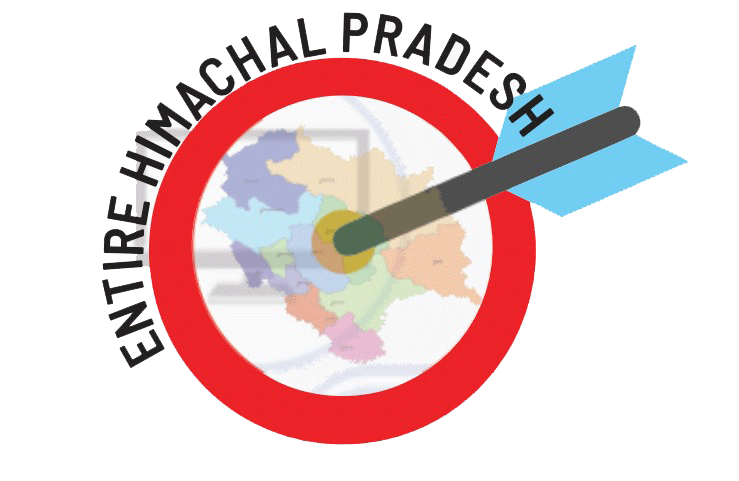
Rs. 125 Crore
Time Deadline – 3 Years
End of December 2027

